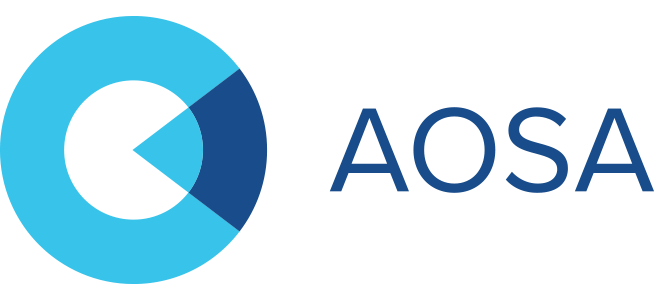Are you joining our fight for optometry?
In less than a month, doctors and optometry students nationwide will convene in Washington, D.C., to meet with lawmakers and fight for our profession. AOA on Capitol Hill, April 24-26, is the AOA’s single-largest annual advocacy experience and the opportunity to get immersed in the issues affecting optometry. And, for the first-time since 2019, we have the chance to deliver these messages, in-person, on Capitol Hill.
The past two years of virtual, AOA on Capitol Hill programming looped in more students than ever before, but that also means this will be the first chance for many of us to experience, first-hand, the impassioned energy and debates that happen at the AOA’s advocacy event.
So, whether you’re already packing your business attire and getting hyped following #EyesOnTheHill2022, or just want to keep tabs on what’s happening in Washington, D.C., keep reading.
What can I expect from AOA on Capitol Hill?
AOA on Capitol Hill is the single-largest annual advocacy event and a cornerstone of the AOA’s federal advocacy efforts with over 500 advocacy-minded doctors and optometry students in attendance. Optometry students will join alongside doctors on Sunday and Monday, April 24-25, in listening sessions, presentations and other special events that are oriented to preparing attendees for potentially meeting with their federal representatives on Tuesday, April 26. Not all attendees will be able to meet with their legislators; however, the information provided can help optometry students get actively involved in the profession and know more about advocacy as we begin our careers. Optometry students are the future of this profession, and we have a responsibility to our colleagues to keep the profession thriving.
This year, optometry students also will participate in a number of student-specific events, such as a special track of education, an AOA+ Leadership Link opportunity and an AOSA Student Recognition Reception.
What events do I need to attend to receive my travel grant from AOA?
There’s a lot happening at AOA on Capitol Hill this year, so don’t feel overwhelmed by the agenda. To satisfy the requirements for the AOA’s travel grant, students will need to attend the AOA on Capitol Hill Welcome Reception, 6:30-8 p.m. ET, Sunday, as well as the day’s programming scheduled for Monday, including the AOA+ Leadership Link and AOSA Student Recognition Reception that evening. Please note: For virtual attendees, recordings will be available on AOA EyeLearn in the days following AOA on Capitol Hill. Viewing the student recordings of AOA on Capitol Hill will fulfill the virtual AOA on Capitol Hill requirement of Leadership Society.
When will I receive my travel grant?
Students will need to submit a W-9 form, and if you have not been contacted yet or provided with this form, please contact the AOA’s Member Services at memberservices@aoa.org. This helps expedite receiving your travel grant. All grants will be mailed to the address provided on your W-9 following AOA on Capitol Hill.
To ensure there are no bumps in the road with receiving your $425 travel reimbursement, keep in mind that you will provide receipts showing payment of any of the following: airfare, lodging, ground transportation, or parking. Keep in mind food and drinks are not part of the $425 travel grant, but several meals and social functions are provided throughout the meeting!
How will I know if I have been scheduled for a Hill visit?
You will be receiving a notification from Advocacy Associates regarding the timing of your Hill visits. You also will be receiving an email from AOA staff confirming which state you have been matched with.
What issues are we discussing? Are there prep materials?
This year, AOA on Capitol Hill occurs in conjunction with the AOA Payer Advocacy Summit, an alignment that focuses our advocacy strengths on third party payer issues affecting optometry. Advocates will learn about and build support for an AOA and American Dental Association-backed, bipartisan bill, called the Dental and Optometric Care (DOC) Access Act, H.R. 3461/S. 1793. You can read more about this legislation here.
Additionally, advocates will work to avert impending Medicare pay cuts and urge Congress to reform the Medicare pay system, as well as emphasize the need for federal regulators to refocus their efforts on stopping online contact lens seller abuses.
Attendees will receive fact sheets and materials on-site about these and other issues discussed during the event.
How can I access the recorded sessions from AOA on Capitol Hill?
Select portions of AOA on Capitol Hill, including the morning and afternoon legislative briefings, will be available for viewing on AOA EyeLearn, April 25-26. A full recording will be available in the days following the event. Reference the user guide for more information about accessing the AOA’s professional development hub.
Please note: For virtual attendees, recordings will be available on AOA EyeLearn in the days following AOA on Capitol Hill. Viewing the student recordings of AOA on Capitol Hill will fulfill the virtual AOA on Capitol Hill requirement of Leadership Society.
Is there a place where I can find all the information for AOA on Capitol Hill?
Yes, the AOA has an event app for AOA on Capitol Hill that includes event information, social media, agenda, fact sheets and other relevant attendee documents for your reference while on-site.
To access the app, download the “CVent Events App” in the Apple or Google Play store. Open the app and search “AOA on Capitol Hill 2022,” then download the event. Enter your first and last name and email address that you registered with to gain access to the app content.
How can I follow along with what’s happening?
Follow the news and excitement from AOA on Capitol Hill on our event social wall or contribute to the conversation using the hashtag, #EyesOnTheHill2022, on Instagram, Facebook, Twitter and LinkedIn.



